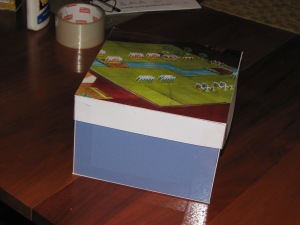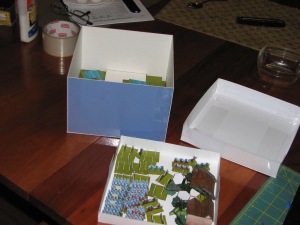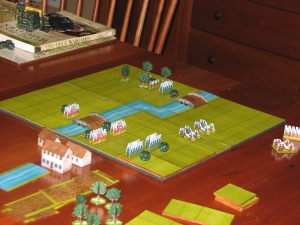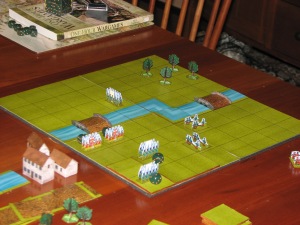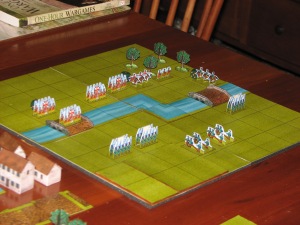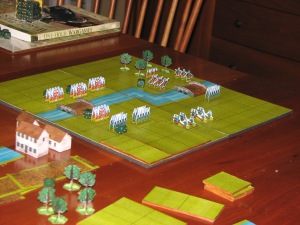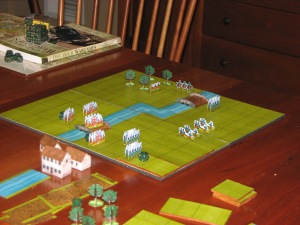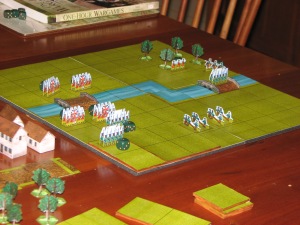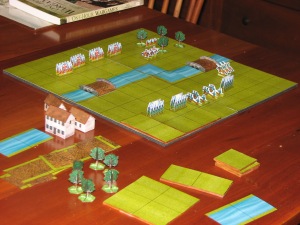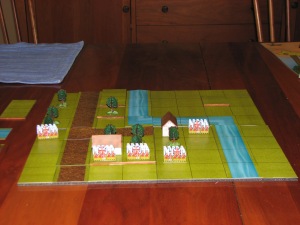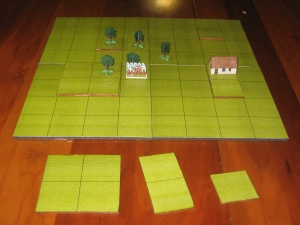Kicking the new rules around play-test style, I decided to try a Rome vs Pyrrhus battle. Hereclea is always a good test battle since it can be played on a flat, featureless plane. I made the opening moves that the Roman commander did along with the response as Pyrrhus heard word that Roman cavalry had crossed the river.

At the end of turn 1. Rome has the only unit on the board. They move the cavalry forward at top speed. Pyrrhic cavalry enter at the bottom of turn 1.

At the end of turn 2. Rome wins the initiative and enters the board with the rest of their army. They wisely hold back their cavalry. Pyrrhus follows suit.
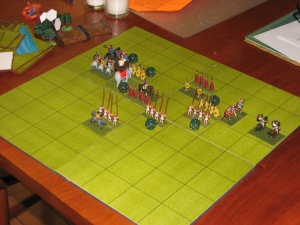
End of turn 4. There was a small amount of skirmishing. The Epiriot light infantry takes a hit as it has no room to escape. The Roman left flank is turned. Fighting in the middle is inconclusive.
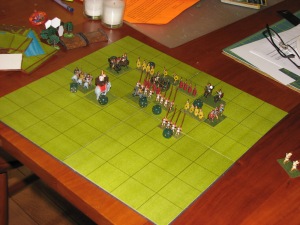
Turn 5-6. The Epiriots easily wrap around the Roman left with their light cavalry. Only luck allows the Roman allied unit to survive as long as they do. Center continues to sway to and fro.
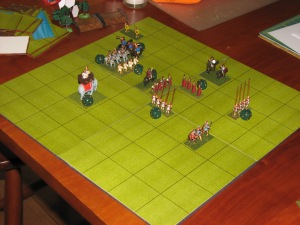
Turn 7-9 The Epiriots drive back the Romans in the center. They realize that that Pyrrhus can slide right and engage again pinning the Roman legionaire against the Epiriot light cavalry. This turned into a fatal mistake. The Roman commander had Pyrrhus pinned against his own unit. It was hit twice and was eliminated. In the ensuing At the bottom on turn 9, the Epiriots manage to kill the Roman Legionaire. Both armies pass exhaustion at this point and the battle is over.
Rome wins 9-8 in a close struggle. This battle could have gone either way. The Epiriots made a fatal mistake with their general and one unit blocking their own retreat. The battle really felt like an Ancient battle as described in some of the primary sources. Lots of scrumming in the middle with some maneuvering on the flanks.



 Posted by acarhj
Posted by acarhj 